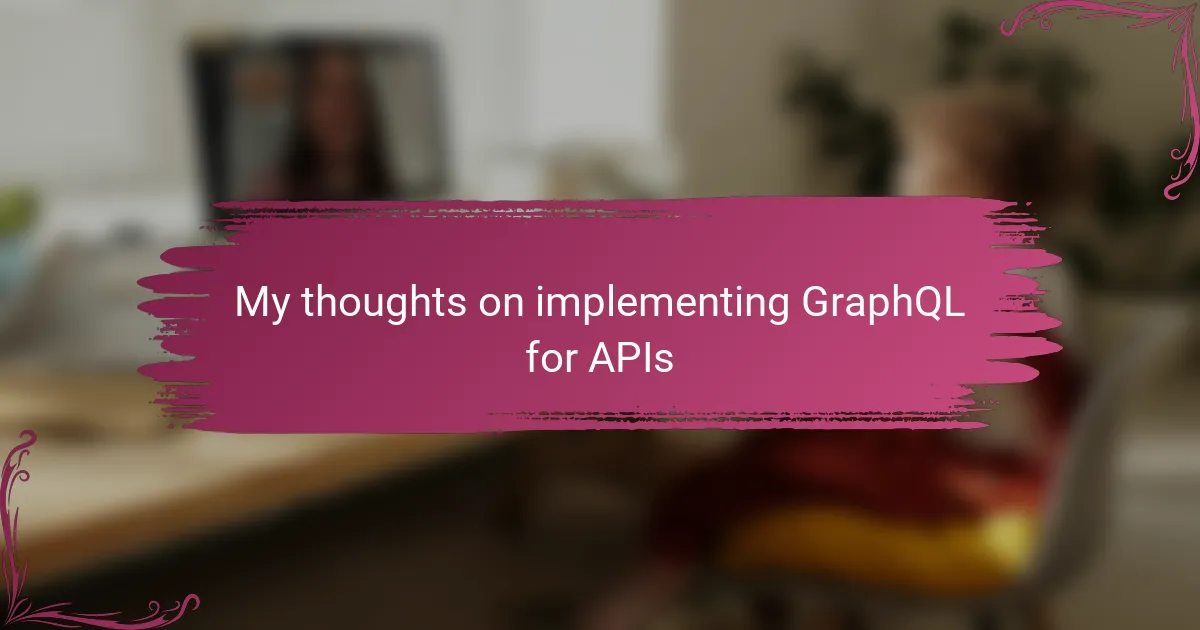Key takeaways SSL certificates are essential for verifying website identity and ensuring secure communication, thereby enhancing user trust and credibility. Nginx offers flexibility and efficiency, making it easy to configure SSL through straightforward directive management within server blocks. Thoroughly testing SSL configurations, using tools like SSL Labs and running OpenSSL commands, is crucial for ensuring […]

My experience with agile methodologies in software teams
Key takeaways Agile methodologies emphasize flexibility and collaboration, allowing teams to adapt quickly and deliver results more frequently through practices like sprints and daily stand-ups. Key benefits of agile include improved team morale and enhanced communication, fostering an environment where feedback is valued and client needs can be met more effectively. Challenges in agile adoption […]

This is how I debugged JavaScript with Chrome DevTools
Key takeaways JavaScript debugging involves using browser tools like Chrome DevTools to pause execution, inspect variables, and understand code behavior in real-time. Setting breakpoints and conditional breakpoints helps pinpoint issues without overwhelming the debugger, while stepping through code reveals logic flow and errors effectively. Adopting strategies like isolating variables and annotating code improves debugging efficiency […]

My personal opinion on using Webpack for bundling
Key takeaways Webpack bundles multiple JavaScript files and resources into optimized files, improving page load times and overall efficiency. Understanding entry points, loaders, and plugins is crucial for effective Webpack configuration, allowing for flexible and tailored builds. Challenges include a steep learning curve and dealing with cryptic error messages, which can be mitigated by breaking […]

My experience with Docker container orchestration
Key takeaways Docker container orchestration simplifies managing multiple containers, enhancing deployment efficiency and reliability. Key concepts include clusters for efficient teamwork, automatic service discovery, load balancing, and self-healing capabilities. Challenges often involve network complexity, dynamic scaling issues, and the need for robust health checks and monitoring strategies. Advanced techniques like rolling updates, custom plugins, and […]

My thoughts on implementing GraphQL for APIs
Key takeaways GraphQL allows precise data fetching through a defined schema, reducing over-fetching and under-fetching common in REST APIs. The single endpoint design simplifies architecture, making testing and debugging easier compared to managing multiple URLs. GraphQL’s strong type system and introspection features enhance development efficiency by catching errors early and serving as self-documenting APIs. Implementing […]

My experience using Postman for API testing
Key takeaways Postman simplifies API testing with an interactive interface that eliminates the need for complex coding, allowing users to easily build and analyze requests. Key features such as automated testing, Collections for organization, and environment variables enhance efficiency and collaboration in managing API tests. Effective strategies include setting clear testing goals, leveraging automation to […]

This is how I integrated TensorFlow into my projects
Key takeaways TensorFlow simplifies machine learning by providing flexible libraries and intuitive APIs, making it easier for developers to implement complex neural networks. Setting up a virtual environment prevents version conflicts and enhances the installation process, improving the overall experience when beginning with TensorFlow. Understanding core concepts such as tensors and computational graphs is crucial […]

How I optimized GitHub Actions workflows
Key takeaways Understanding GitHub Actions workflows enhances productivity by automating manual tasks like testing and deployment. Setting specific, measurable goals for workflow optimization helps track progress and align improvements with team needs. Implementing techniques like caching, parallelism, and breaking down jobs into focused steps significantly improves workflow efficiency. Regularly monitoring and testing workflow changes ensures […]

How I fixed build errors in Xcode
Key takeaways Build errors in Xcode stem from issues like missing files, incompatible library versions, or incorrect settings. Utilizing tools like the Issue Navigator, build logs, and console output can greatly aid in diagnosing and resolving errors. A systematic approach to troubleshooting—reading error messages carefully, performing clean builds, and isolating changes—can lead to more effective […]
